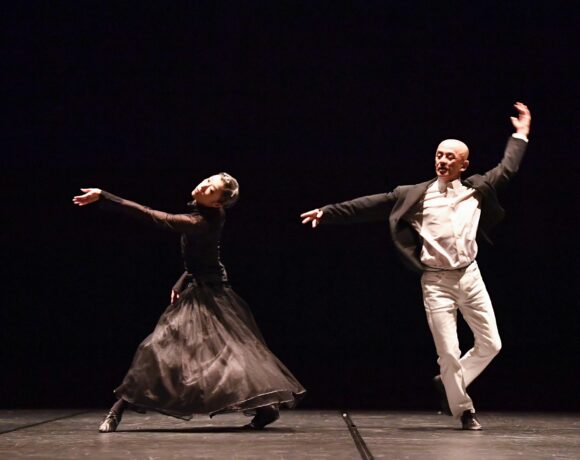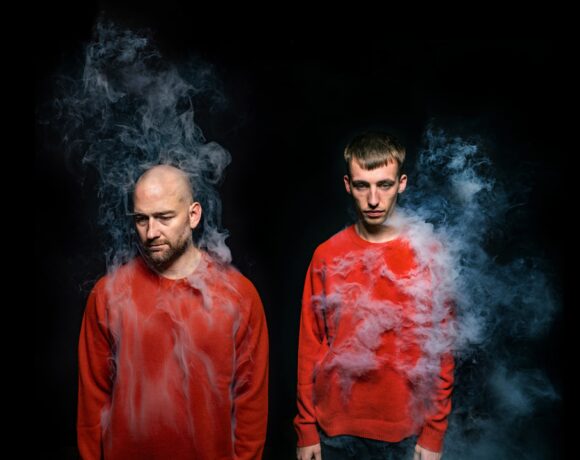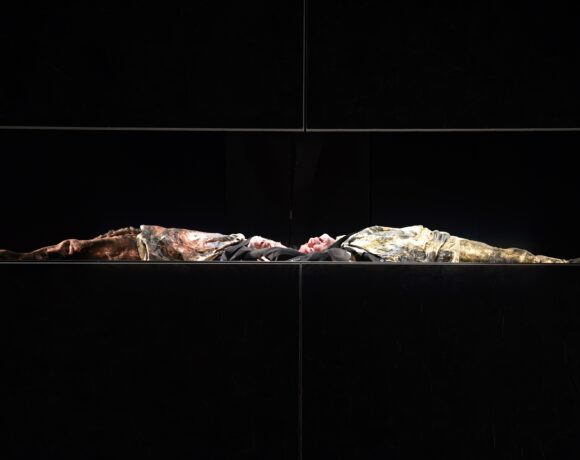Last May, the five winners of Cultura per tutti, cultura di tutti (Culture for all, everybody’s culture), the open call of Parma Italian Capital of Culture 2020-2021, promoted with the support of the Municipality of Parma and the Institute for artistic, cultural and natural resources of the Emilia-Romagna Region and dedicated to ideas and projects, designed in a digital and multicultural perspective, aimed at opening the doors of regional museums to particular categories of audiences such as young people, families, the elderly, people with physical or cognitive disabilities, foreigners and residents . Among the selected projects, disclosed in an online ceremony, we find OPERA SULL’OPERA – ogni uomo è un artista – Un’esperienza di engagement digitale (WORK ON THE WORK – everyone is an artist – A digital engagement experience) of Lenz Foundation, which provides for the introduction of touch painting sessions in museum visits where the visitor is invited to create his own work on the exhibited work through the interposition of a transparent screen that allows, by touch and in an interactive way, to draw creating a new digital artistic artefact.
To find out more, we interviewed Maria Federica Maestri and Francesco Pititto, artistic directors of Lenz Foundation and Elena Sorbi, project curator of the Foundation.
Emanuela Zanon: The OPERA SULL’OPERA project – everybody is an artist – A digital engagement experience will be implemented in a very delicate epoch-making moment for the enjoyment of the visual arts, at the end of a long period in which the only possible fruition of the art works of art passed through their digital version distributed by social networks. Do you think that the transparent screen with which the public will be called to interact can contribute to heighten the awareness of the original artifact?
Francesco Pititto: It must be said that the project is completed in its design phase, but the way to achieve it is still to be followed. The transparent screens suitable for this type of intervention are still being tested, the companies that produce them presented the first prototypes in April. This as far as hardware is concerned, while in order to identify the most functional software, research can only be verified in a second phase. Last but not least, the cost of these equipment and the methods of use will be very high and tied to public and / or private patronage. That said, between looking at the work – be it a painting or a sculpture or a building – and the live work, we create a caesura produced by the physical transparency of the screen, and we think this can create a common field of intent between the subject and the observed object. Being able to re-draw without touching, and even modify and interpret, means placing oneself in a creative situation that goes beyond the state of remote and passive fruition. Intellectually active, but limited in the subjective translation of emotion, of thought because it lacks touch, of bodily act. Distant from the work, separate, but with the power to intervene on the work itself, we think that in this act the user can really reach a greater awareness, from the original artifact to the digital artifact, reproducible in the new form.
Elena Sorbi: One of the fundamental aspects of OPERA SULL’OPERA is the transformation of the “user” from a passive receptor of knowledge to an active creator. For many years we have taken Joseph Beuys’ manifesto-phrase ‘Jeder mensch ist ein künstler’ – every man is an artist as paradigm, and we think that through the realization of the re-work the individual activates that possibility of confronting public responsibility of their potential. The museum visitor who merely observed (or imagined, thanks to the audio descriptions, in the case of blind or partially sighted people) thus enhances the museum heritage, first static, starting from his own sensitivity, makes it contemporary, in some way makes it reborn through a re-creation. The screen can be touched with any part of the body: a deep, unique and contingent relationship with the work is triggered, a dramaturgy possible only starting from the encounter between that specific artifact and that specific user / performer. The first distracted reception, in passing, becomes direct assignment, a global approach is limited, which risks being superficial, focusing attention on a singularity, a point that encompasses the infinite. Not only does the public increase their awareness of the original artifact, but the artifact itself is made more “aware” of the aesthetic sign of an era different from that in which it was conceived – and in doing so, its universal features become clearer, the part of the story of which the work is the bearer that still needs to be revealed.
E.Z .: The second phase of the project involves the creation of a Digital Museum of Art Brut “Opera sull’Opera” linked to an annual exhibition. The initiative tends in particular to involve people who are usually excluded from museum use: intellectual, motor and sensory disabled people, visitors who don’t speak Italian, children and the elderly. Do you think it is more the aspect of “doing” to build this bridge between areas that are normally not very communicating or that of “looking” at other works created by non-professionals in the sector?
Maria Federica Maestri: We think it is more about acting to create new opportunities for participation in art, a subjective and creative experience that puts you in direct contact with the museum work, or wherever it is in front of the user. Without any cultural or physical barrier, everyone will think of the most appropriate way. This will be one of the curator’s tasks.
ES: The exhibition of the works has to do with the political dimension of the project, which aims to undermine the concept of empowerment, that is, the categorization that makes us perceive reality as composed of skilled individuals and individuals which are less or not skilled. We are artists in research, and each research must have a method, which asks us to start from strong theoretical premises. The Social Model of Disability, developed by Mike Oliver in 1981, defines disability as a social state. This is a revolutionary change of perspective within the enabling bias: from a focus on the medical condition and on the individual deficit which must be provided with a series of compensations that allow adaptation to an intangible system, it focuses on failure of society in providing appropriate services to the differences in people’s needs and aspirations. Disability is not a condition of the individual, but becomes the attribute of a community that does not know how to equip itself with the tools necessary to achieve equity – not the same resources for everyone, but a targeted redistribution of the resources that it guarantees to everyone, depending on the own specificity, the same level of accessibility. Knowing that you can fully enjoy an experience that enhances your uniqueness increases the motivation to approach an environment of any individual. In this perspective, the bridge is created by a change in socio-cultural model.
EZ: The transposition of the performative works into unconventional contexts – monumental complexes, abandoned industrial buildings, deconsecrated places of worship, unused health facilities – is one of the characteristic features of Lenz’s poetic approach, developed to overcome the expressive limits imposed by the rigid frontality of the Italian theater. In OPERA ON THE OPERA it seems to me that the opposite process is applied, in the wake of Joseph Beuys’ intuitions. In which aesthetic and political horizon will the works created by visitors fit?
MFM: The intent is to ‘sabotage’ the reliquary space and to transform the museum-shrine into a polysemic landscape: to create a new porous and penetrable framework in which the acute gesture and the obtuse gesture add up to compose a third artistic field, that of the disturbed and disturbing finished work. The abolition of the historical custody, of the inviolability of the pedestal wants to return to the museum a new public function, that of being a place of collection of aesthetic acts produced by the human in the condition of maximum sensitivity. The post-museion must not attempt to shape the world, but must be an unstable, provisional, indefinite, not aimed at the art market playground of plural artists.
ES: The epistemological research underlying the project is defined starting from the process implemented by Beuys to redefine the social role of the artist, and from the idea of total art as an identification of the aesthetic experience that permeates the issues of everyday life in which we are immersed. And then from the ecological interest, for the definition of a new wisdom that, freed from the relationships of strength and oppression between individuals, arises from a newfound relationship with the natural dimension of our being men, part of a whole that evolves by welcoming. Bloody and aggressive at times, but not cruel, and above all more authentic. In the era of the political body, re-work is a universal communication tool between people and museums. It knocks down the fourth wall starting from touch, the gesture that unites us before the cultural dimension from which we make ourselves defined and that influences the choice and development of language, gender, personal characterization, schooling, cognitive or motor development. Through the touch, which we understand intuitively, we sublimate the fear of contagion, we imprint our identity on reality and experience it as transformation (aesthetics) and community (politics).
E.Z .: Many of Lenz’s works find nourishment in a search for the primary characters of the contemporary performative language through collaboration with sensitive actors, whose vulnerable subversive charge becomes the fundamental pillar of the search for a new theater time. What time of art will oversee the creation of these new works and their placement in the history of images?
F.P .: In the imaging industry created for the various theatrical works of Lenz, in which the presence of sensitive actors allowed us to trace the primordial sense of the represented texts, the rewriting as a visual complement to the dramaturgy was mine alone. It is now a question, at least as regards the theatrical artistic experience, to provide new linguistic tools to everyone. To all those who will participate in a process of experimentation on the creation of a work of art, in front of another work of art. It is about producing images without using the video camera, producing images with the hand or with a part of the body “Le corps anticipe le geste./C’est-à-dire que le corps nous précède. / Le corps est plus léger qu’on ne le croit d’ordinaire, plus “soft”, plus “logiciel” (Michel Serres, Corps). The body more program, more software, more functional for the creation of something new. I can’t say what the location will be in the history of images, but I believe that this project can contribute to a real participation of the community in museums, art galleries, monumental squares, cities. Art Brut is placed in a segment parallel to that of the Normally recognized art, the new “works from works” could mark a new time and, at the same time, contain the past, history and beauty of the original work.
E.S .: We refer to a circular time, applying the same principle of truth in the fiction on which our theatrical linguistic sign is based. About 35,000 years ago, some men felt the urge to leave their time in the Chauvet Cave. The same seem to need to testify before over-structuring, the need for touch and sign, the abstraction of reality, the desire to collect information, summarize it and return it in a dialectical and didactic process that wants to open up and confront the community: there we move along the spiral of development returning, transformed, to the point from which we started.
Info:
 Lenz Fondazione, Opera sull’opera © Francesco Pititto
Lenz Fondazione, Opera sull’opera © Francesco Pititto
 Lenz Fondazione, La Vida es Sueño © Francesco Pititto
Lenz Fondazione, La Vida es Sueño © Francesco Pititto
 Lenz Fondazione, Opera sull’opera © Francesco Pititto
Lenz Fondazione, Opera sull’opera © Francesco Pititto
 Lenz Fondazione, Opera sull’opera © Francesco Pititto
Lenz Fondazione, Opera sull’opera © Francesco Pititto
 Lenz Fondazione, Opera sull’opera © Francesco Pititto
Lenz Fondazione, Opera sull’opera © Francesco Pititto
 Lenz Fondazione, KINDER © Francesco Pititto
Lenz Fondazione, KINDER © Francesco Pititto
 Lenz Fondazione, Opera sull’opera © Francesco Pititto
Lenz Fondazione, Opera sull’opera © Francesco Pititto
 Lenz Fondazione, Opera sull’opera © Francesco Pititto
Lenz Fondazione, Opera sull’opera © Francesco Pititto
Graduated in art history at DAMS in Bologna, city where she continued to live and work, she specialized in Siena with Enrico Crispolti. Curious and attentive to the becoming of the contemporary, she believes in the power of art to make life more interesting and she loves to explore its latest trends through dialogue with artists, curators and gallery owners. She considers writing a form of reasoning and analysis that reconstructs the connection between the artist’s creative path and the surrounding context.






NO COMMENT